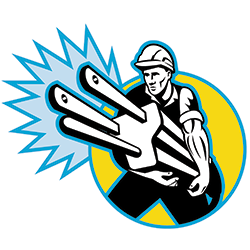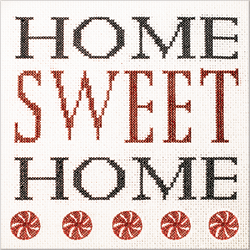Before heading to your next U.S. trade show, familiarize yourself with some of the most common rules governing the exhibit hall. By Candy Adams

veryone in the trade show industry knows that exhibiting in the United States is governed by a multitude of regulations and rules that dictate everything from the height of your exhibit to the volume of your in-booth music. Fortunately, all of these regulations are explained in one or more of the following places: the trade show's prospectus, terms and conditions, booth-space rental contract, and/or exhibitor services manual. Unfortunately, the sheer number of regulations — combined with the fact that they're scattered across different documents — makes it easy to inadvertently miss one or more of them.
Considering that most of these rules have financial ramifications and/or missed-opportunity costs should you happen to break them, knowing the dos and don'ts on the trade show floor isn't just common sense — it's cost-effective. So to help you get a handle on the most common regulations exhibitors encounter regarding trade shows, I've compiled them into one handy list.
 Outboarding and Suitcasing
Outboarding and Suitcasing
Outboarding occurs when nonexhibiting companies book hospitality suites or meeting space near the trade show venue, and invite registered attendees to off-site events. The International Association of Exhibitions and Events (IAEE) has decried this practice to protect the interests of companies that rent exhibit space and have their off-site meetings approved by show management. Nonexhibitors that sell at a show where they have no skin in the game are poaching buyers from the exhibitors who have paid for the opportunity to reach them.
Every show deals with outboarding differently because there are no IAEE standards in place. But since the goal of show management is to drive attendees to the exhibit hall during show hours, holding any event off the floor is generally frowned upon. Are you going to get banned from a show if you take a few clients to an off-site lunch? Probably not. But I have known people and companies that were permanently blacklisted for more blatant outboarding practices, such as inviting attendees to an off-site hospitality suite for a product demo. To curtail such occurrences, most show managers now reserve blocks of suites or meeting rooms at hotels near the show venue that can only be booked by exhibitors. That way, if a nonexhibiting company attempts to rent meeting or event space at any of those hotels, the venue can refuse their reservation.
In addition to outboarding, there is another serious offense that happens, called suitcasing. Attendees that sell to exhibitors or other attendees within the exhibit hall, but don't purchase an exhibit to do so, are suitcasing. Typically, suitcasers approach people in the public areas of the show, such as registration and food-service areas, or aisles, and hand out brochures or other marketing collateral. This is expressly prohibited at most shows since again, these people are poaching the attendees that exhibitors have paid to see. Consequences for suitcasing include being kicked out of the show, or even being banned for life. If you need to be at a particular show, then purchase exhibit space and pay to play like everyone else.
 Federal Rules
Federal Rules
According to the Americans with Disabilities Act (ADA) of 1990, trade show exhibits are considered "public accommodations" and are subject to the requirements of the ADA. Most show managers include a section in their booth-space rental contracts stating the exhibitor understands that the ADA requires its exhibit be accessible to persons with disabilities, and agrees that the exhibitor is solely responsible for assuring that its display complies with the ADA and its responsibilities to the physically, visually, or hearing impaired. That means exhibitors have to guarantee equal access to their
exhibits so every attendee can have the same in-booth experience — whatever that experience may be.
For example, exhibits with raised floors need to include ramps onto which mobility devices can roll. And double-deck exhibits must offer the same amenities on both levels so everyone can have a similar exhibit experience, regardless of their ability to climb stairs. Furthermore, if show management notifies you that a hearing-impaired attendee wishes to visit your exhibit and has requested a sign-language interpreter, and you fail to provide that interpreter when the person arrives at your booth, you are in violation of the ADA.
There is a misconception that exhibits are classified as "temporary structures," and are therefore exempt from the ADA. But the exemption doesn't exist, and that's an expensive misunderstanding. Under Title III, the Department of Justice may obtain civil penalties of up to $55,000 for the first violation and $110,000 for any subsequent violation. For more information on ADA requirements, contact the U.S. Department of Justice ADA Information Line at 800-514-0301, or visit www.ada.gov.
 Confines of Booth
Confines of Booth
Your booth-space rental contract and exhibitor services manual typically have a "confines of booth" clause that explains that all of your marketing and promotional activities must take place within the perimeter of the space you've rented. So don't plan on distributing literature in front of the venue or having your company's mascot roam the exhibit hall passing out fliers.
It's important to note that while guerrilla-marketing tactics do violate the confines of booth clause, they can also be effective at building buzz. If you're entirely committed to your out-of-the-booth tactic, request a variance from show management. While it's true that I have rarely gotten show managers to grant a variance on this particular regulation, it certainly doesn't hurt to ask. After all, the worst that can happen is your request could be declined, and you'll simply have to stay inside your rented booth space.
 Electrical Regulations
Electrical Regulations
Before bringing your own extension cords, power strips, and/or surge protectors to power an exhibit at your next trade show, contact the facility to verify its specifications. While most Underwriter Laboratory (UL)-rated power strips with surge protection are allowed, it's possible you'll be required to rent such items from the show venue. Furthermore, some government-subsidized convention centers, such as the Las Vegas Convention Center, prohibit cube taps (connectors with three outlets), while most hotels and private event venues allow them.
Generally speaking, the criteria for conforming electrical cords is that they must be UL approved, less than or equal to a 14-gauge flat (not round) wire, and grounded with a third prong. Many venues recommend using gaff tape rather than duct tape to adhere wiring to the floor or carpet since it doesn't leave an adhesive residue. In the last few years, most convention centers' electrical rules have eased up, and many now allow exhibitors to plug in equipment to 120V outlets (the commercial version of the 110V power we use in our own homes). However, most show venues continue to require that electricians plug in 220V equipment and lighting fixtures for safety reasons.
 Music Rights
Music Rights
Any live or recorded tunes played in your exhibit may be subject to laws that govern the use of copyrighted music. There are three authorized licensing firms that collect copyright fees for composers and publishers of music: Broadcast Music Inc. (
www.bmi.com), SESAC (
www.sesac.com), and The American Society of Composers, Authors, and Publishers (
www.ascap.com).
The fees reach into the hundreds and sometimes thousands, depending on the copyright. For reference, the last time I played music in an exhibit was in the '90s. At the time, I had paid $500 to use "Born to be Wild" in a motorcycle-themed exhibit. Granted, an easily recognizable song will likely strike a chord with attendees — but it will cost you. If you want music but don't want the price tag, there are websites that offer royalty-free music, such as www.stockmusic.net.
If the combination of exhibit-hall noise and the sound generated in your booth exceeds the standard 85-decibel limit (or the limit listed in your exhibitor services manual), plan on getting a visit from show management and its decibel meter. The rep will usually ask you nicely to turn down the volume, but if he or she has to ask a second time, you'll likely receive an official warning that could be followed up by the disconnection of your exhibit's electrical power.
 Exhibit Height
Exhibit Height
Depending on the venue's ceiling height, maximum exhibit height can reach 24 feet. However, there are standards for height based on the type of exhibit: 8 feet for an in-line, 12 feet for a perimeter in-line, and 16 to 20 feet for a peninsula/split island or island exhibit 20-by-20 feet or larger. If you violate the rule, show management will ask you to reduce the height. Often the floor manager will catch the infraction during setup, and it will be fixed by the exhibitor's I&D crew. But if it goes unnoticed until after the show opens, the height has to be corrected on overtime after the show closes that day.
Show management sets height restrictions based on three things: the desired aesthetic (you can be in a ballroom with 24-foot ceilings and still be restricted to tabletop exhibits), the IAEE Guidelines for Displays Rules and Regulations, and the venue's ceiling height. Height variances on linear perimeter exhibits (from 8 feet to 16 feet) are common.
 Line of Sight
Line of Sight
Just because you've paid for your company's booth space does not mean you have free reign over how you use that space and where you place exhibit elements. The line-of-sight rule dictates that you can't place items or structures taller than 4 feet in the front half of your linear booth space. You also can't put anything there that obstructs the view of the exhibits next to yours.
Like many of the aforementioned regulations, you can request a variance. But generally speaking, the only way to obtain permission to break this particular rule is to get the exhibitors next to you on board. If they don't have an issue with your plans — or if they, too, want a variance granted — you can present the request together to show management. As long as no one complains and any potentially impacted parties are in complete agreement, the variance is typically granted. If you're exhibiting at gift or craft shows, this rule is often eliminated altogether, and all cubic content of your both space can be used.
 Insurance Certificates
Insurance Certificates
An increasing number of shows are requiring a certificate of insurance (COI) that proves comprehensive general liability (CGL) coverage, not just from exhibitor-appointed contractors (EACs), but also
from the exhibiting company. You may be asked to name the following entities as additional insureds on the certificate: the show organizer, manager, and show itself, as well as the facility and the general services contractor (GSC). Standard policies are for $1 to $2.5 million CGL and $250,000 in workers compensation coverage.
Show management sometimes partners with the insurance company that manages all the paperwork. The company will then notify show management of the exhibitors that have not purchased the mandated policies, and those exhibitors will be precluded from unloading their exhibits until the requirements are met.
 Food and Beverage
Food and Beverage
Food and/or beverage distributors are generally allowed to provide 1 ounce of food and 2 ounces of beverages to attendees. But if the exhibitor is not in the food business, it must contact the venue's exclusive caterer before distributing any food or beverage items (including branded bottles of water). The caterer will often request a "waiver fee" equal to the amount of money it could have made selling concessions of equal value had the exhibitor not offered them in its exhibit.
For example, let's say the caterer purchases a 24-bottle case of water for $4, and turns around to sell that case to an exhibitor for $44. It makes a $40 profit. So if you brought in your own 24-bottle case, the caterer could charge you $40 to make up for its lost profit. And while show management won't bust your chops over a bowl of candy, it will likely stop you from baking cookies in an Easy-Bake Oven and handing them out to attendees. Also note that any liquor served in your booth has to be done by the caterer's licensed bartenders.
With punishments ranging from receiving a simple slap on the wrist to having your exhibit shut down for the rest of the show, ignoring these rules or willfully violating them only ends up hurting your company, its image, and your program's ROI. So throw out the old adage, "It's better to beg for forgiveness than to ask for permission." In this case, these rules are not meant to be broken.





 veryone in the trade show industry knows that exhibiting in the United States is governed by a multitude of regulations and rules that dictate everything from the height of your exhibit to the volume of your in-booth music. Fortunately, all of these regulations are explained in one or more of the following places: the trade show's prospectus, terms and conditions, booth-space rental contract, and/or exhibitor services manual. Unfortunately, the sheer number of regulations — combined with the fact that they're scattered across different documents — makes it easy to inadvertently miss one or more of them.
veryone in the trade show industry knows that exhibiting in the United States is governed by a multitude of regulations and rules that dictate everything from the height of your exhibit to the volume of your in-booth music. Fortunately, all of these regulations are explained in one or more of the following places: the trade show's prospectus, terms and conditions, booth-space rental contract, and/or exhibitor services manual. Unfortunately, the sheer number of regulations — combined with the fact that they're scattered across different documents — makes it easy to inadvertently miss one or more of them. Outboarding and Suitcasing
Outboarding and Suitcasing Federal Rules
Federal Rules Confines of Booth
Confines of Booth Electrical Regulations
Electrical Regulations Music Rights
Music Rights Exhibit Height
Exhibit Height Line of Sight
Line of Sight Insurance Certificates
Insurance Certificates Food and Beverage
Food and Beverage Candy Adams, CTSM, CME, CEM, CMP, CMM,
Candy Adams, CTSM, CME, CEM, CMP, CMM, 


